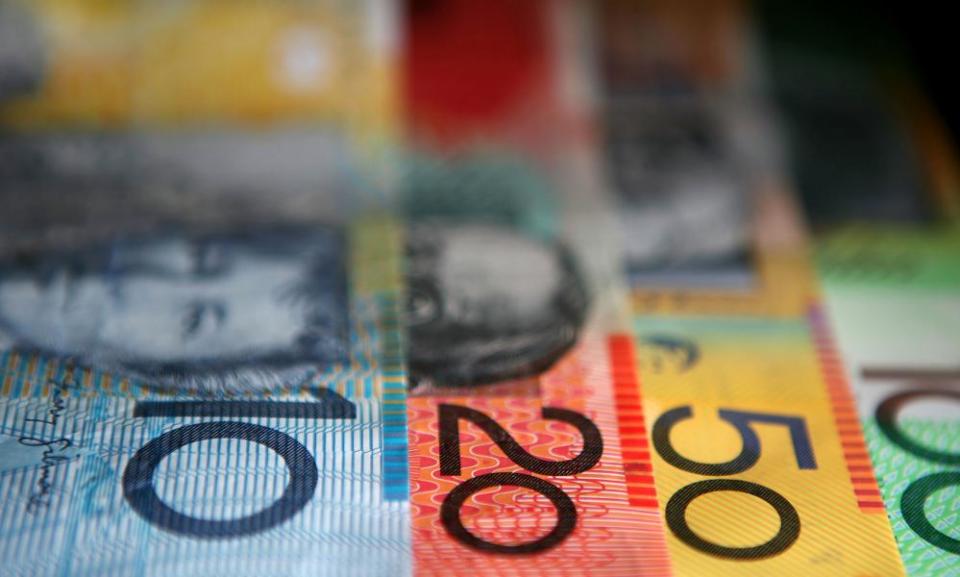A new decade is likely to bring another year of low wages growth

A new year and a new decade brings with it some new hopes, but for workers 2020 looks likely to be another year where the hope for a return to strong wages growth will remain unfulfilled.
The lack of strong wages growth has undoubtedly been the biggest economic concern for Australian households over the past five years. From 1997 to the end of 2013, the average annual private-sector wage growth for Australians was 3.5%; since then the average has been just 2.1%.
For so long have we been stuck in a zone of low wages growth that it is now seven full years since we experienced that previous average level of wages growth.
This low growth period has continued for such a length of time that the worry is it has become locked in – we have now reached a point where expectations of wages growth above long-run inflation levels (2.5%) are considered extreme.
What is also a worry is that the year ahead sees little chance of any significant boost in the current levels.
The latest Deloitte “Business Outlook” report, issued on Monday, suggested that “low inflation (and its close cousin, weak wage gains) are set to linger for longer”.
You can understand why they take such a view. If we look at inflation expectations, there is little sign that inflation growth is going to spark into life, at least in the first half of this year:
Yes, there will likely be an increase in the prices of some vegetables due to the fires, but that will not affect too greatly the underlying inflation growth. And no workers are going to get a better wage rise because the price of lettuces went up for a month or so.
We remain stuck with low inflation growth, reflecting the overall low demand in the economy.
When we turn to other leading indicators, we see little ahead that is going to change this.
The most recent CBA purchasing managers index (PMI) revealed that “Australian services business activity shrank further at the end of the year, accompanied by a fall in employment”. It also noted that its composite output index “fell fractionally from 49.7 in November to 49.6 in December, indicating a decline in private sector business activity for a second straight month at the end of the year”.
This is also unlikely to be helped by the bushfires, which have already created a hit on consumer confidence.
The first weekly ANZ-Roy Morgan consumer confidence survey of this year produced the worst result since September 2015, but also was merely an extension of a downward trend since the end of June:
And while the spread between the Australian government five- and two-year bond yields is back in positive territory, the current spread of around 10 basis points is more than half the 20-year average of 24 basis points.
Whenever the interest rates being offered for a five-year bond are close to that offered for a two-year bond, it suggests a less than stellar outlook.
On the employment front, the department of employment’s leading indicator is finally starting to improve. After declining for 17 straight months, in November and December it began to rise. The problem is the overall indicator remains very much in negative territory:
And this is at the heart of our slow wages issue.
On the trend of the past four years, we need unemployment to fall to around 4% before we are likely to see wages growth of around 3%:
With the current level at 5.2%, that means we need the equivalent of around 170,000 people moving from unemployment into a job. That is a big ask, and not one likely to occur while consumer confidence, PMI and labour-market leading indicators are all at below average levels.
It is also not helped given the most recent estimate for non-mining private infrastructure spending for 2019-20 is lower than was predicted at the same time for 2018-19:
The upshot is in the face of the totality of this pretty downbeat data, the market still expects the Reserve Bank to cut interest rates, with the main question being whether it will wait until the May budget before doing so.
The market, of course, is often wrong. This time last year it was predicting the cash rate would most likely still be 1.5%, rather than the current 0.75%:
It is unlikely the market will be as wrong again (unless we have a 0% cash rate in 12 months’ time) but the likelihood that it is too pessimistic seems rather slim.
The government is making a bit of noise about new spending in response to the bushfires, but that is likely to be at best enough to counter the economic hit rather than provide a level of stimulus that was needed even before the fires.
And unless there is a surprise improvement within the next six months, this most likely means we will have another year of weak wages growth.
• Greg Jericho writes on economics for Guardian Australia

 Yahoo News
Yahoo News 